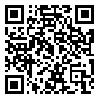Volume 24, Issue 2 (2020)
CLR 2020, 24(2): 1-25 |
Back to browse issues page
Download citation:
BibTeX | RIS | EndNote | Medlars | ProCite | Reference Manager | RefWorks
Send citation to:



BibTeX | RIS | EndNote | Medlars | ProCite | Reference Manager | RefWorks
Send citation to:
Tari H, Jafarzadeh M, Mohammadi S. Analysis of legal relationship between seller’s right to cure and buyer’s right to terminate (A comparative study in Vienna Convention (CISG), Unidroit Principles (UPICC) and Iranian Law). CLR 2020; 24 (2) :1-25
URL: http://clr.modares.ac.ir/article-20-38848-en.html
URL: http://clr.modares.ac.ir/article-20-38848-en.html
1- , h.tari@umz.ac.ir
2- Associate Professor of Law at Shahid Beheshti University
3- Associate Professor of Law at University of Mazandaran
2- Associate Professor of Law at Shahid Beheshti University
3- Associate Professor of Law at University of Mazandaran
Abstract: (2489 Views)
Under articles 37 and 48 of the United Nations Convention on Contracts for the International Sale of Goods (CISG), the seller is entitled to cure the lack of conformity of the goods due to specific circumstances. The same legal establishment has been accepted in the Article 7-1-4 0f the Unidroit Principles of International Commercial Contracts (UPICC).
Anticipating the seller’s right to cure, one controversial issue raised is the status of the buyer's right to avoidance. Subsequently, the question arisen is whether the seller's right to cure is prior or the buyer's right to avoidance. While there are various interpretations of Article 48 leading to disagreements, in UPICC, the buyer has no right to avoidance in case of seller’s cure under Article 7-1-4. Similarly, according to general principals including Article 478 of the Civil Code in Iranian legal system, the buyer has no right to terminate if the seller is ready to cure.
To conclude, we can say the seller’s right to cure from the perspective of the doctrine, judicial precedent, legal and economic analysis has priority over buyer’s right to avoidance.
Anticipating the seller’s right to cure, one controversial issue raised is the status of the buyer's right to avoidance. Subsequently, the question arisen is whether the seller's right to cure is prior or the buyer's right to avoidance. While there are various interpretations of Article 48 leading to disagreements, in UPICC, the buyer has no right to avoidance in case of seller’s cure under Article 7-1-4. Similarly, according to general principals including Article 478 of the Civil Code in Iranian legal system, the buyer has no right to terminate if the seller is ready to cure.
To conclude, we can say the seller’s right to cure from the perspective of the doctrine, judicial precedent, legal and economic analysis has priority over buyer’s right to avoidance.
Keywords: International Sale of Goods, Lack of Conformity, Right to cure, Avoidance, Economic analysis of law
Article Type: Original Research |
Subject:
Comparative Law
Received: 2019/12/9 | Accepted: 2020/08/22 | Published: 2020/09/20
Received: 2019/12/9 | Accepted: 2020/08/22 | Published: 2020/09/20
Send email to the article author
| Rights and permissions | |
 |
This work is licensed under a Creative Commons Attribution-NonCommercial 4.0 International License. |







